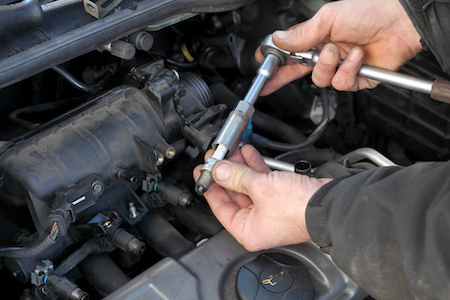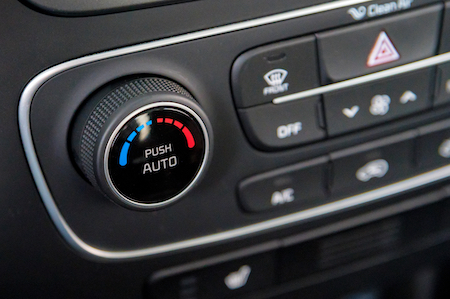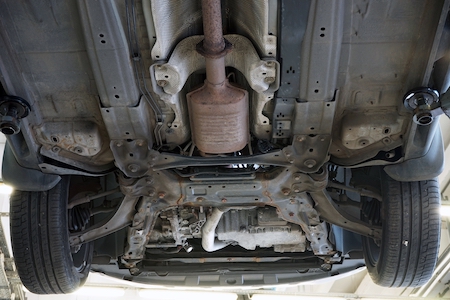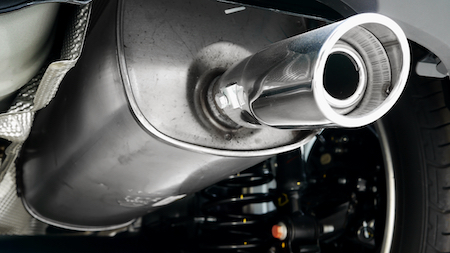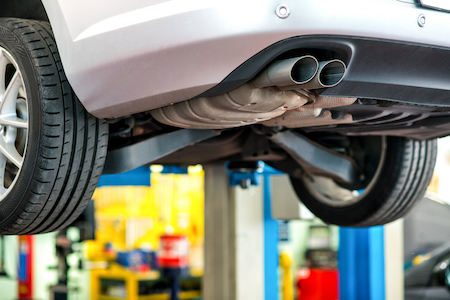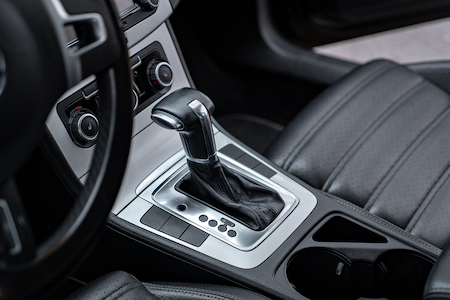When you pull up to fill your car up with gas, you usually have a choice of several types of fuel. You make a selection – regular, plus, premium – and let the fuel flow into your tank. You hop into your car and move on your way.
But have you ever stopped to think about the type of fuel you use and what it does for your vehicle? Does fuel type matter?
From the moment we buy a car, we put fuel into the tank without thinking much about it. You’re programmed to select a fuel grade, fill it up, and head out into your day. Yet most of us think little about it. What goes into the fuel before you put it into the tank?
Fuel is made up of chemicals designed to keep your car running smoothly. Of course, every fuel manufacturer interprets what that means in a different way. While your owner’s manual dictates the right type of fuel needed to keep your car operational, you might be wondering: What’s the difference?
Gasoline is manufactured from crude oil. Crude oil undergoes a variety of refinery processes before it ends up at your local gas station. Additives include aromatic compounds, detergents, isoparaffins, and other additives required by the EPA.
Gasoline is typically sold by octane ratings. The theory states that higher octane should result in more power to the engine, while decreasing the likelihood of unburnt fuel running through the system and exiting the exhaust.
Regular octane ratings start at 87 for regular, 88 to 90 for a mid-grade fuel, and 91 to 94 for premium. This rating helps manufacturers measure the ability to resist “knocking” during combustion. Under certain conditions, the fuel/air mixture can ignite early. This is called pre-ignition, and often makes a knocking sound similar to a percolator.
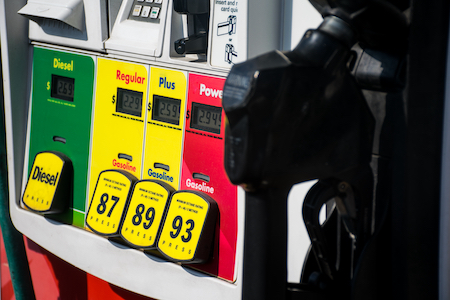
In other words, octane controls the ability of the fuel not to detonate early before it has a chance to mix with the air supply and spark as it ignites. Octane measures gasoline’s resistance to pre-ignition. Higher octane provides less likelihood of detonation.
Why some cars need higher octane
Some cars are built with higher output. They use a higher compression rate to produce more power. They compress the fuel/air mixture more, creating excess heat. This can allow pre-ignition to occur. These cars need the higher octane fuel to ensure gasoline doesn’t ignite early.
If you drive a car that requires premium gas, it will say so in the owner’s manual. It’s always a good idea to stick with the fuel source recommended by your car’s manufacturer. But it won’t kill your engine, or cause immediate damage if you fill up with a lower grade fuel. It can harm your engine over time, but occasionally filling up with a lower grade won’t damage it immediately. But it can speed up wear and tear.
What fuel is recommended
When you first purchase a vehicle, getting to know your car is a good idea. The owner’s manual will recommend what type of fuel you should use in your car, what octane level your vehicle will operate best at.
Regular fuel is recommended for engines that don’t have a high compression rate. It doesn’t rely on turbocharging to force air into the fuel/air mixture. The fuel/air ratio remains relatively stable throughout the engine consumption process, and a higher octane isn’t required to keep the mix from detonating prematurely. Regular fuel will contain additives and detergents to help clean and lubricate the engine, keeping it in good working condition without leaving deposits on the various engine parts.
Premium fuel is recommended or required for engines with a high compression ratio, or come with a turbocharger. When the higher compression or turbocharge kicks in, it forces more air into the engine to help pull more energy from the detonation process. Without the higher octane fuel mixture, it can become unstable and prone to premature detonation. Premium fuel was created for stability as the fuel/air mixture changes with the uptick of air. Some manufacturers also provide more detergents and octane additives to ensure engines remain clean, lubricated, and offer you optimal performance.
What about upgrading the type of fuel?
If premium gasoline improves the performance of vehicles that need it, what about other cars? It’s natural to assume that what is good for performance with one vehicle will help with others too.
A non-turbocharged vehicle is designed to operate on regular fuel. When you fill up with regular fuel, the engine gets the recommended octane rating, ensuring the engine receives the proper fuel. If you put in premium instead, it will offer a higher octane. While this isn’t bad and won’t hurt the engine, it doesn’t offer any benefit. It will cost you because you’ll be paying more at the fueling station.
Gas at high altitude
Here in Denver, we drive at a higher elevation on a daily basis. Head up into the high country, and you add even more stress to your vehicle.
Gas stations try to compensate for this in some cases by selling lower octane fuel. They deem that with thinner air, it lowers a car’s compression ratio, which in turn makes a lower octane fuel acceptable. While that may work for older cars, with newer fuel-injected engines, they detect the lower air levels and adjust accordingly. They expect the fuel as recommended, and make the necessary changes accordingly.
As you drive here in Denver, stick with manufacturers’ guidelines and choose the level of octane recommended. Even if you take a road trip to lower altitudes, select the octane level closest to what is listed in your owner’s manual.
What type of fuel does your car use?
What fuel your car runs on does matter.
To keep your vehicle in good working condition, check to see what octane your car’s manufacturer recommends. Then select a high quality gasoline that feeds your car’s engine with high quality gasoline every time you fuel up.
Your car will thank you for it down the road.


